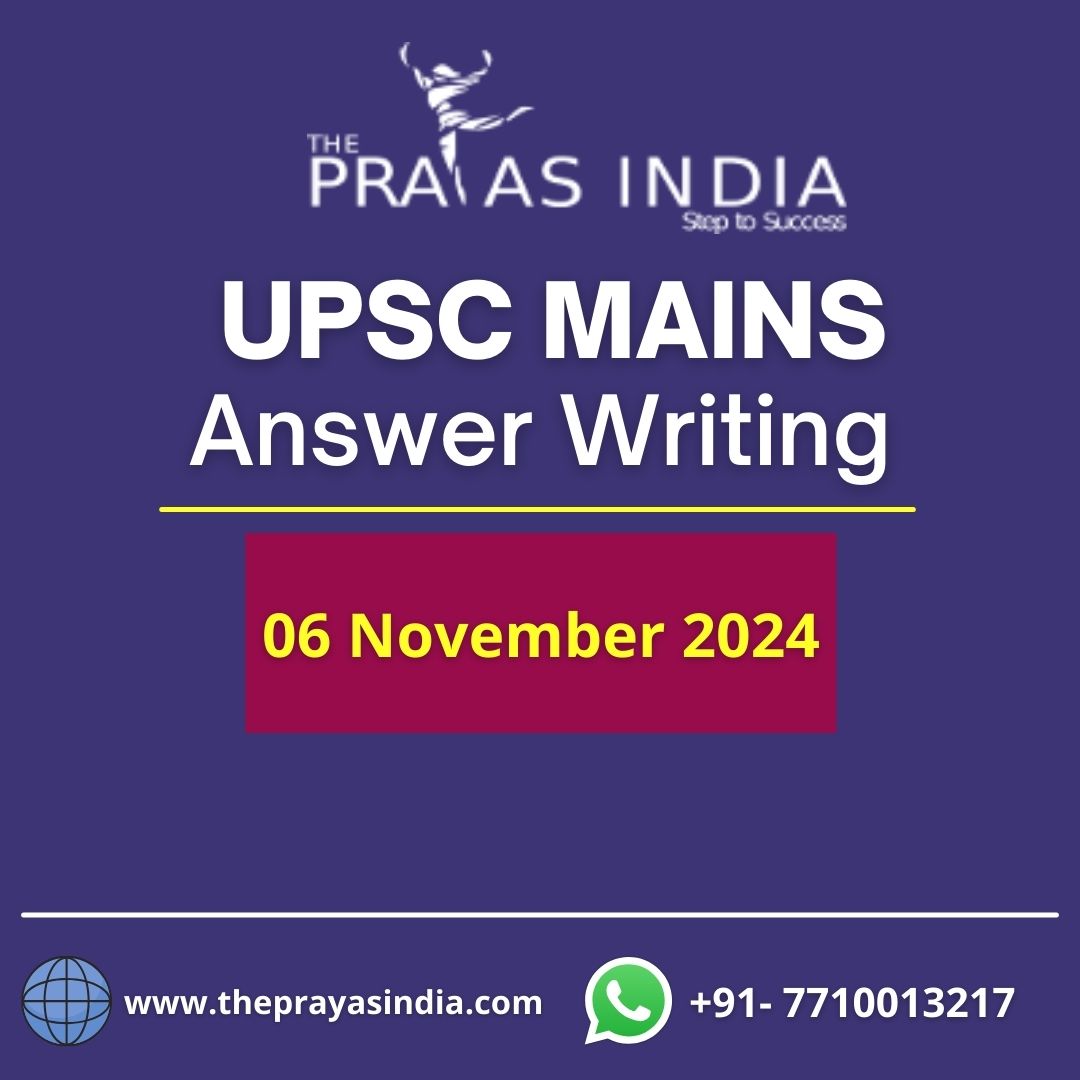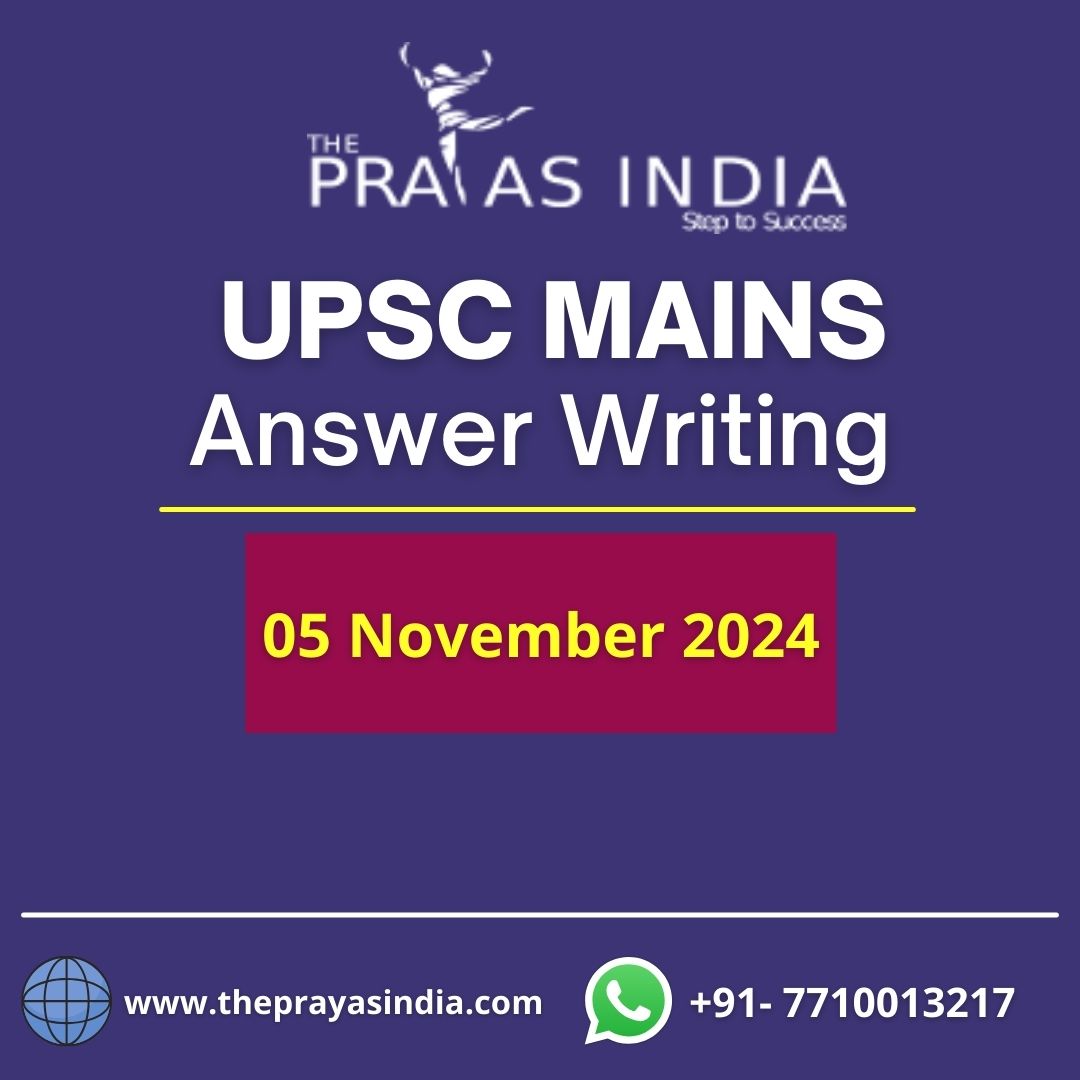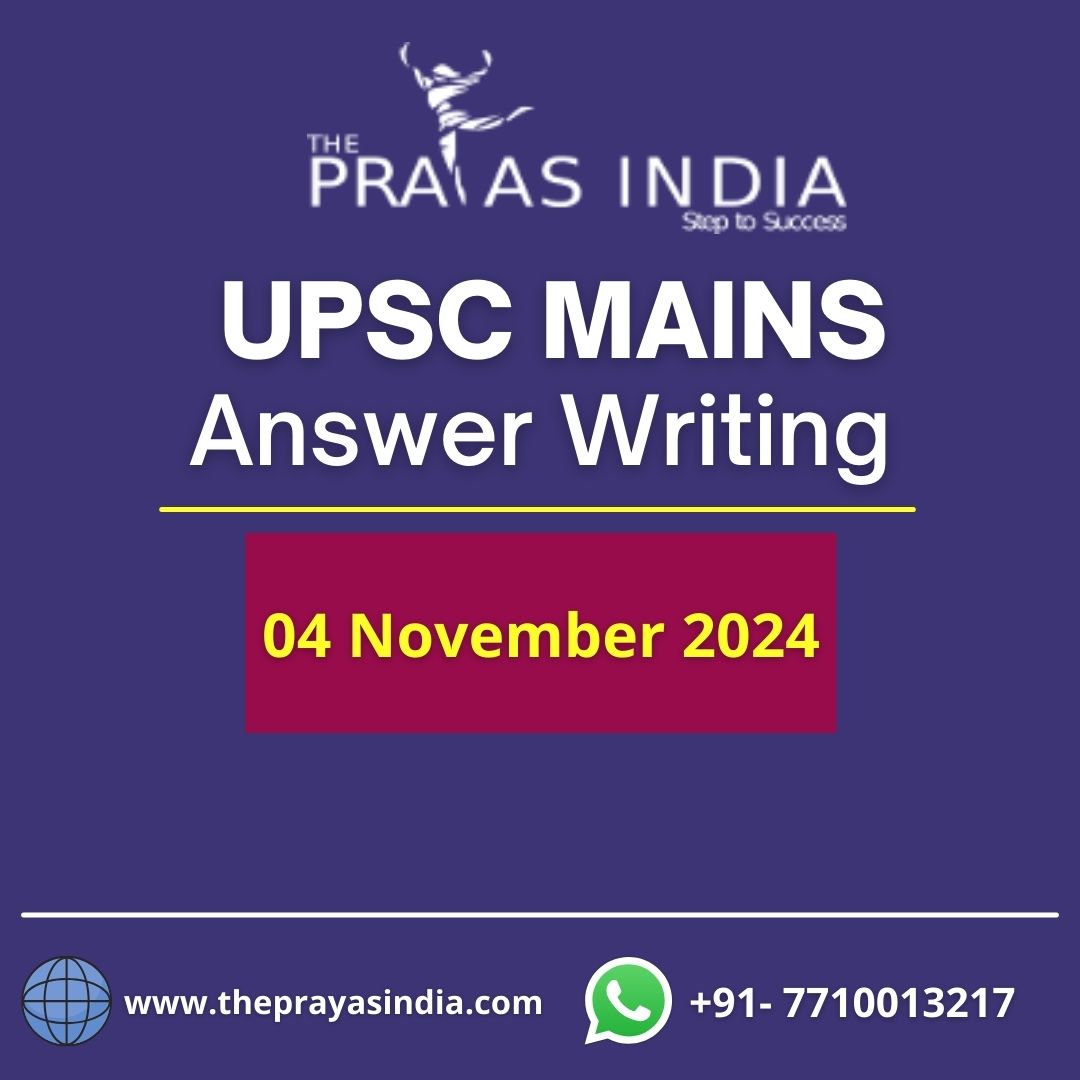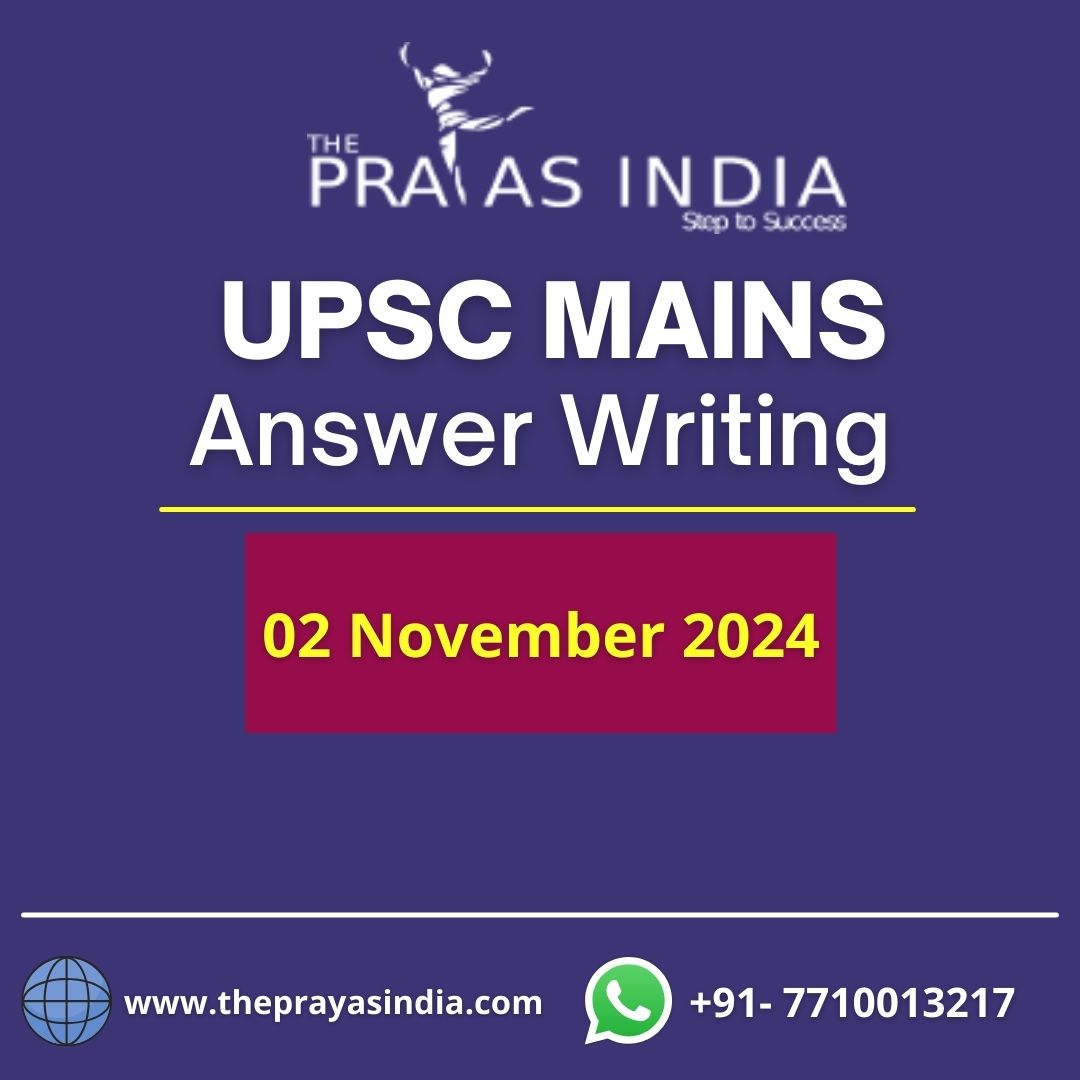MAINS DAILY QUESTIONS & MODEL ANSWERS
Q1. One of the biggest threats to the rule of law and social harmony is hate speech, which is the source of many types of violence that are being committed. Examine. (250 words)
Paper & Topic: GS II – Social issues
Model Answer:
Introduction:
- The word “hate speech” refers to any terminology used in speech, writing, or behaviour that disparages or targets a person or group based on their religion, ethnicity, nationality, race, colour, descent, gender, or other identity characteristic.
- Such statements have the ability to incite individuals and society to engage in acts of terrorism, genocide, and ethnic cleansing, according to the Law Commission’s 267th report on hate speech.
- The notion of what constitutes “hate speech” is debatable and contentious, and there is no international legal definition of it.
Body:
Hate speech’s effects on society:
- Through the dissemination of hate speech and the encouragement of discrimination, marginalised people are pushed outside the social, economic, and political domains of society.
- It is commonly acknowledged that at its worst, it serves as a prelude to ethnic cleansing.
- Internal Security: A false film that inflamed racial tensions was the cause of the Muzaffarnagar riots in 2013. Hate speech and false information about minorities have fueled anti-immigration sentiment in the West (e.g., France, Italy, and Greece).
- Users with similar political views share biassed information and opinions that support their beliefs, reinforcing them even more, even when those opinions were based on erroneous information. This is known as user homophily and the “Bubble” phenomena. For instance, Twitter encourages users to follow individuals who tweet or express similar opinions.
- Igniting extremist sentiments: Fake news spreads dangerously similar individuals and perpetuates beliefs that were previously found regionally, such as neo-Nazis in Germany and separatists in Kashmir.
- Mob lynching: In Jharkhand, rumours of child abductions led to the lynching of innocent bystanders.
- Violence: Directly or indirectly, a hostile and chaotic environment is produced. Islamophobia (a direct outcome of hate speech) led to the extremist’s attack on a mosque in Christchurch.
- As evidenced by the Delhi rioting case 2020, misinformation and disinformation brought on by hate speech and fake news have resulted in rioting.
Actions required:
Measures:
- The largest social media giants in the world are looking into forming an industry-wide coalition to combat fake news on their platforms in India, including Facebook, Google, Twitter, and Byte Dance.
- To track down the source of such news, the Indian Election Commission must collaborate with tech firms.
- educating the final consumers.
- To participate at a deeper level, the government should release a policy framework on the potential harm caused by internet messaging networks.
- levying significant fines, such as in Germany, where social media firms risk fines of up to €50 million for repeatedly failing to remove illegal content from their websites.
Moving ahead:
- To cope with this and a system to get down such content, which is likely to disrupt society setup, clarity and technology advancement are essential.
- enhancing research, encouraging the reporting of such information, and raising the bar for training legal and police organisations on equality and non-discrimination.
- The Indian government has pushed internet companies to have their servers there, which could aid in addressing offensive speech in real time.
- creating opposing narratives on social media and educating the public through campaigns to combat extremism.
- If the government of a particular country makes a request, there may be an internationally recognised regulation that holds social media corporations like Facebook accountable for addressing hate speech by removing blatantly illegal content within 24 hours.
- Platforms for social media need to be accountable for openness, accountability, and a set of rules and regulations that users can recognise as standards and that, when regularly enforced, can start to set precedents. Users, police, and members of the civil society will all be able to identify the kind of content that are most likely to be removed as a result.
- By failing to take action to stop vigilante groups from sowing discord among communities, fomenting hatred against countrymen, and taking the law into their own hands, public authorities must be held accountable for failing in their duty of care and for disobeying this court’s orders.
- Giving hate speech a precise definition would therefore be the first step in dealing with the problem, and other actions like raising public awareness are urgently needed.
Q2. The Ayushman Bharat Digital Mission (ABDM) seeks to create the framework required to sustain the nation’s integrated digital health infrastructure. Through digital highways, it would close the distance between the various healthcare ecosystem stakeholders. Analyse critically. (250 words)
Paper & Topic: GS II – Government Policies and Interventions
Model Answer:
Introduction:
- The Prime Minister’s Ayushman Bharat Digital Mission (ABDM) intends to develop an intuitive online platform that will permit interoperability across the digital healthcare ecosystem. The project has been envisioned as a collection of “digital building blocks.” Each component of the architecture is viewed as a “digital public good” that can be utilised by any participant in the digital health ecosystem and offers essential functions that support the ABDM mission.
Body:
Features:
- The National Digital Health Mission, commonly known as the PM Digital Health Mission, is a programme that focuses on creating a national health identity card for each citizen as well as registers for medical professionals and healthcare facilities.
- Additionally, it will support maintaining the privacy, protection, and security of personal health information.
- Every citizen’s health ID will also serve as their health account, to which they can link and examine their individual health records with the aid of a mobile application.
- All healthcare providers from both contemporary and conventional medical systems will be housed in the Healthcare Professionals Registry (HPR) and Healthcare Facilities Registries (HFR).
- The project is now being conducted in six Union Territories during its experimental phase.
- While the National Health Authority (NHA) is commemorating the third anniversary of the Ayushman Bharat Pradhan Mantri Jan Arogya Yojana (AB PM-JAY), the programme is being implemented nationally.
Ayushman Bharat Digital Mission’s potential:
- With their permission, people’ longitudinal health records will be accessible and exchangeable through the mission.
- The elimination of issues with the medical care of the underprivileged and middle class will be greatly aided by the Ayushman Bharat Digital Mission.
- The new programme will serve a similar role in fostering interoperability within the digital health ecosystem as UPI did in revolutionising payments.
- It will guarantee ease of doing business for medical professionals, facilities, and service providers.
- In addition, the mission’s Ayushman Bharat Digital Mission Sandbox will serve as a framework for technology and product testing that will assist organisations, including private players, in joining the National Digital Health Ecosystem and developing into a provider of health information.
Possible difficulties:
- ‘Health’ is still not acknowledged by the mission as a legally protected right. As stated in the 2015 draught of the National Health Policy, there should be a push to make health a right.
- The privacy and security of patient data is one of the main issues. The security and confidentiality of the patients’ medical records must be guaranteed.
- The capacity of customers to purchase insurance may be impacted by potential information misuse by insurance companies.
- If health information is revealed, the businesses may charge a large premium or, in rare instances, even refuse.
- Additionally, prior to beginning the mission on a pan-India scale, technological and implementation-related shortcomings must be aggressively addressed in light of the failure of a similar National Health Service (NHS) in the United Kingdom.
Conclusion:
- The Ayushman Bharat Digital Mission would be essential in resolving the problems diverse Indians, particularly the poor, have accessing medical care. It is possible to do this by linking individuals through technology that already connects patients to hospitals, healthcare providers to patients, etc. For the health industry, this offers revolutionary potential unlike anything else ever before, but care must be taken to ensure that the information is not accidentally released.




